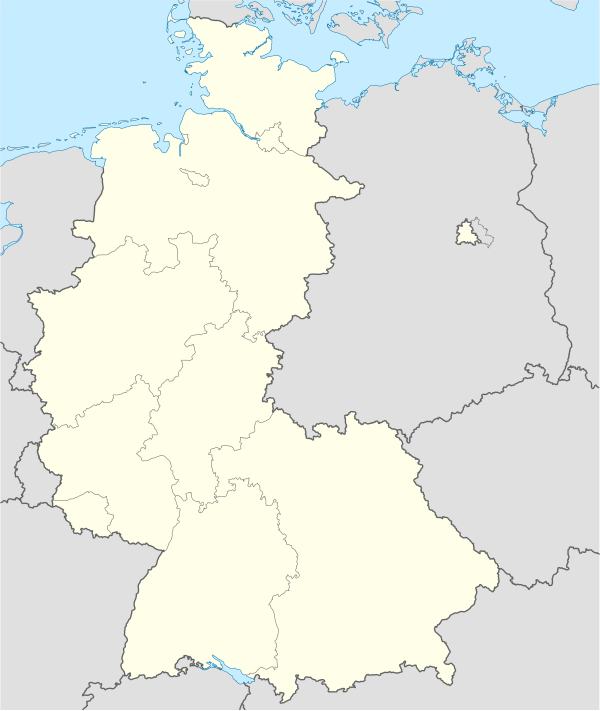List of foreign military bases in Germany
Headquarters of foreign armed forces in Germany since 1945 |
The list of foreign military bases in Germany has served as an entry point to the additional lists of the individual sending countries since February 2015. The increase in the amount of data made this step necessary.
At the end of the Second World War, the four victorious powers initially stationed troops in the occupation zones agreed between them in accordance with the agreements of the European Advisory Commission . From these occupation troops, stationing forces grew, which are recorded in the following lists:
- List of American military locations in Germany
- List of British military bases in Germany
- List of French military locations in Germany
- List of Soviet military bases in Germany
In a certain sense, Belgium also belongs to the circle of the original occupying powers.It was involved in the invasion of Germany as part of the British Army and stationed an army corps in the Federal Republic of Germany without interruption until after reunification. Please refer:
Canada also took part in the British campaign, but withdrew its troops in 1946. It was only when the situation worsened after the Korean crisis that Canada again stationed troops in Germany, initially in northern Germany and from 1970 in southern Germany. Please refer:
It was not until 1963 that NATO partner Netherlands also took part in the alliance's integrated forward defense and stationed a brigade in the north German lowlands. Please refer:
Only a side note in the history of foreign troop stationing was the military presence of Norway, Denmark and Luxembourg in Germany, which lasted only a few years. Please refer:
See also
- Foreign military bases in Germany
- Allied headquarters in Berlin (historical)
literature
- Restructuring the US Military Bases in Germany: Scope, Impacts, and Opportunities . BICC report 4, 1995
- Site on the history of the British Army of the Rhine (English)
- Page on the history of the American armed forces in Germany (English)
- Ernst Beyermann and Pierre Touzin: Vehicle Profile No. 9: The French Armed Forces in Germany . Flugzeug Publikations GmbH. Unitec media sales
Web links
- The transformation of the US armed forces in Europe
- US bases in Germany (English)
- Location database u. a. the GSSD in the GDR
- Paul Schäfer (Ed.): US Armed Forces in Germany ( Memento from January 3, 2013 in the Internet Archive ) (including legal basis and consequences of the stationing for Germany; PDF file; 3.21 MB)
- www.zone-interdite.net Flash animated world map with military zones (German / English)
Individual evidence
- ^ After the end of the war, Great Britain quickly realized that its troops were insufficient to militarily secure its very large zone of occupation in northwest Germany. Therefore it turned to its allies for support. Canada and Belgium as well as Polish associations in exile had participated as part of the (BR) Twenty-first Army Group under Field Marshal Montgomery in the conquest of the German Reich and took over occupation tasks in clearly defined rooms until 1946. Canada occupied the district of Aurich and the state of Oldenburg, Poland the Emsland, Belgium the district of Steinfurt.
